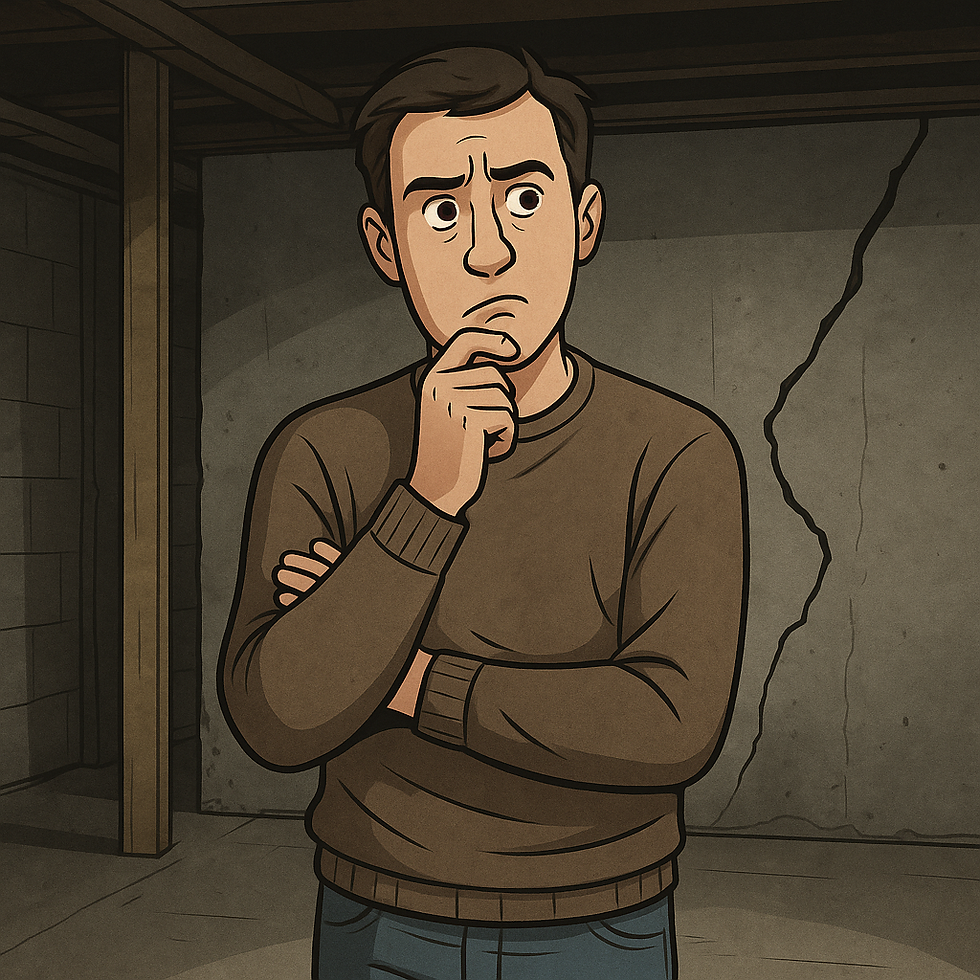Types of Foundation Wall Cracks
- NE Crack

- Jul 6, 2022
- 2 min read
Updated: Mar 17, 2023
Foundation cracks are a common problem in homes, and they can be caused by a variety of factors. Expansive clay soil, for example, can cause the ground to shift and put pressure on the foundation walls. Tree roots can also grow beneath the foundation and cause it to settle. In addition, changes in temperature can cause the soil to contract or expand, putting stress on the foundation. While small cracks may not be a cause for concern, larger cracks can weaken the structure of the home and allow water to enter the basement. As a result, it is important to have any cracks in the foundation repaired as soon as possible.

Cracks in foundations are not a one size fits all. They come in a variety of sizes and shapes. Foundation cracks actually can begin forming within a few years after the initial construction. Commonly known to appear near the walls corners, windows, or the longer sections of the foundation.
Types of Foundation Cracks
Vertical or diagonal cracks are found in the foundation wall and are due to the settling in the foundation of the concrete. As the concrete shrinks in the curing, these cracks are known as shrinkage cracks. They run diagonally or vertically in the wall's middle section and are less than 1/8” wide.
If the crack is wider than 1/8” and close to a corner, it is not because of shrinkage. That is usually a good indicator there is a more serious foundation issue at hand. If you find the crack is getting wider, be sure to call a professional to repair properly.
Horizontal crack or structural cracks indicate a serious problem. They happen due to outside hydrostatic pressure and lead to foundation failure. Though, foundations handle soil and water pressure, additional pressure or flooding causes horizontal cracks and must be repaired soon.
Repairing Foundation Wall Cracks
Repairing vertical or diagonal cracks is a must when it the crack widens. For small cracks using epoxy injections is enough. But for large cracks allowing insertion of a dime, you need structural repairs. Sometimes, homeowners have been known to chisel the crack and fill it with hydraulic cement. The hole does get filled, but it does not bond with the earlier cement and in a few years, will cause a leak.
Repairing horizontal cracks is done by using epoxy injection. It welds the crack together, restoring the original strength. The epoxy injections restore structural quality and make it new and secure again. Foundations with epoxy seals stay rigid to water, air, debris, chemical, and other contaminants.
Is Your Foundation Damaged Beyond Repair?
Most foundation issues are repairable and foundation repair experts can rectify the situation. A foundation issue that is beyond repair occurs when the foundation is collapsed completely and the damage has become irreversible.
Common signs that the foundation is damaged beyond repair include:
Cracks changing direction
Weak and sloping floors above the foundation
Bulging walls with water pressure
Vertical foundation wider cracks at the top
A dime fitting through the foundation crack




Comments